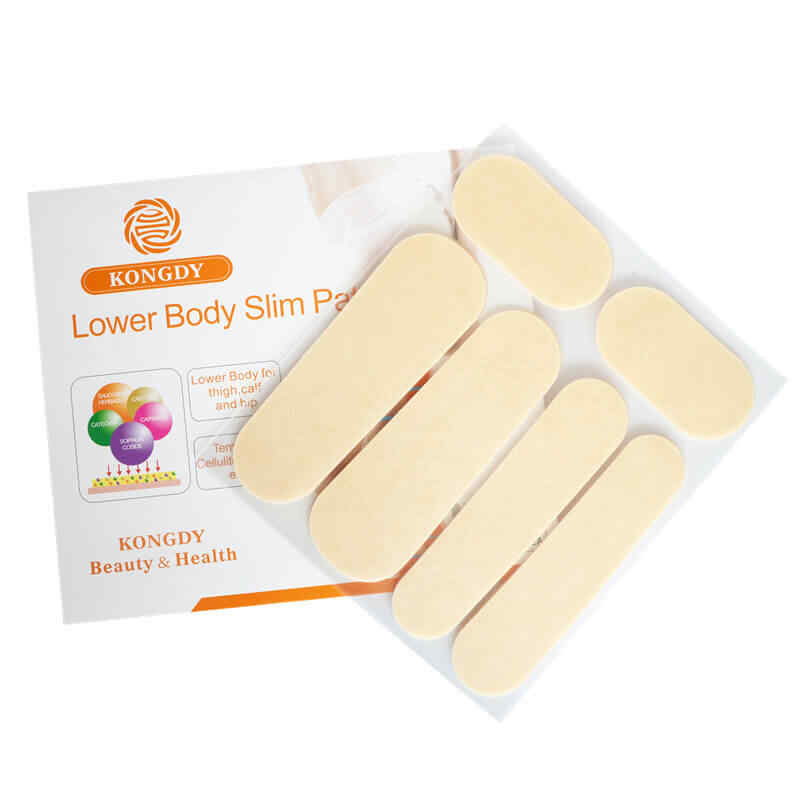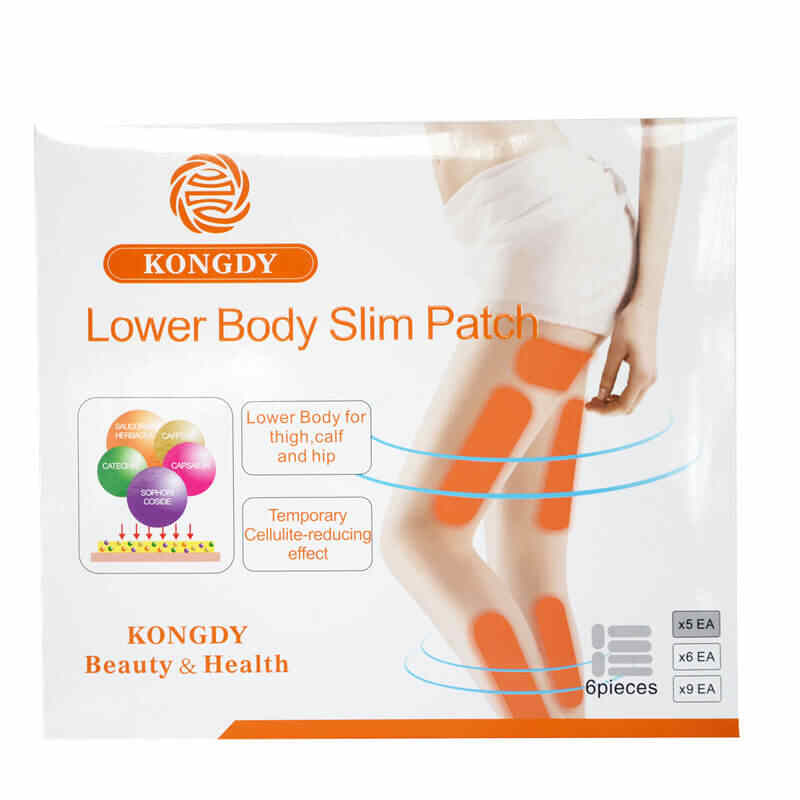How Can I Verify a Hydrogel Slimming Patches OEM’s Quality Control Process?
When it comes to developing effective and safe hydrogel slimming patches, quality control is everything. The global demand for transdermal slimming solutions continues to rise, and many brands are seeking a dependable hydrogel slimming patches OEM partner to produce consistent, compliant, and high-quality products.
However, not all manufacturers are equal. The difference between a successful product and a regulatory disaster often lies in the quality control (QC) process of your OEM partner. If you are planning to work with a hydrogel slimming patches Manufacturer or Supplier, knowing how to verify their quality assurance system is essential to protect your brand reputation and ensure customer satisfaction.
This article explores how you can evaluate, verify, and trust a hydrogel slimming patches OEM’s quality control process, with step-by-step insights, practical tips, and key warning signs to watch out for.

1. Why Quality Control Matters in Hydrogel Slimming Patch Manufacturing
Hydrogel slimming patches are designed to deliver active ingredients through the skin. Because they interact directly with the body, precision, consistency, and safety are non-negotiable.
A qualified hydrogel slimming patches Manufacturer must control every stage of production—from raw material sourcing to finished product testing—to ensure that each patch meets both regulatory and performance standards.
Poor Quality Control Can Lead To:
Skin irritation or allergic reactions
Product contamination or instability
Ineffective weight management performance
Regulatory penalties and product recalls
Therefore, verifying your hydrogel slimming patches OEM’s QC process is not just a precaution; it’s a fundamental business necessity.
2. Step One: Review the OEM’s Quality Certifications
Before starting production, ask for certificates and quality system documentation. A credible hydrogel slimming patches Supplier should hold internationally recognized certifications that validate their manufacturing standards.
Key Certifications to Check:
ISO 13485 (Medical Device Quality Management)
ISO 22716 (Good Manufacturing Practices for Cosmetics)
ISO 9001 (General Quality Management System)
FDA Registration (for U.S. compliance)
CE Marking (for European market access)
Each certification represents a level of regulatory compliance and professional production capability. If your hydrogel slimming patches OEM cannot provide valid or current certifications, it’s a red flag.
3. Step Two: Evaluate Raw Material Sourcing and Supplier Management
The quality of Custom hydrogel slimming patches begins with their ingredients. Hydrogel-based patches typically include polymers, water, natural extracts, and active slimming compounds. These materials must meet strict purity and safety standards.
What to Verify:
Whether the OEM sources ingredients from certified and audited suppliers.
If incoming raw materials undergo COA (Certificate of Analysis) verification.
How storage and handling prevent contamination or degradation.
Tip: Ask for supplier qualification records or documentation showing how your hydrogel slimming patches Manufacturer ensures ingredient traceability.
4. Step Three: Assess the Manufacturing Environment
A controlled manufacturing environment is a hallmark of professional production. When evaluating a hydrogel slimming patches OEM, confirm that the facility maintains proper hygiene, air filtration, and temperature/humidity control.
Look For:
Cleanroom production areas (often ISO Class 8 or higher).
Clear separation between raw material zones and finished product zones.
Employee hygiene policies, protective wear, and equipment sterilization protocols.
These measures are critical in ensuring Private Label hydrogel slimming patches are safe, sterile, and free from contamination.
5. Step Four: Review In-Process Quality Control (IPQC)
A robust OEM partner should implement in-process quality control (IPQC) checks during every production stage. This ensures that errors are caught early and consistency is maintained across batches.
IPQC May Include:
Monitoring hydrogel viscosity and adhesive consistency.
Checking active ingredient distribution uniformity.
Inspecting patch dimensions, weight, and appearance.
Verifying packaging seal integrity and labeling accuracy.
Request documentation or photos of their IPQC procedures to see if they follow international manufacturing standards. A professional hydrogel slimming patches Manufacturer will readily provide such evidence.
6. Step Five: Analyze Finished Product Quality Testing
The final quality test is where you truly understand an OEM’s commitment to excellence. Reliable hydrogel slimming patches Suppliers conduct extensive testing before shipment to ensure each batch meets your specifications.
Common Final Tests Include:
Microbial limit testing
Adhesion strength and peel force testing
pH and stability testing
Skin irritation or sensitivity testing
Moisture content and thickness analysis
Tip: Always request a Certificate of Analysis (CoA) for every production lot. This document provides lab results verifying product quality and compliance.
7. Step Six: Inspect Product Traceability and Batch Control
Traceability is essential for accountability. In the event of an issue, your OEM partner must be able to track any batch from raw material to final shipment.
Ask About:
Batch coding and documentation systems
Retention samples for each production run
Recordkeeping of raw material batches used
A reliable hydrogel slimming patches OEM will maintain detailed traceability reports, which are critical during audits or regulatory inspections.
8. Step Seven: Request Third-Party Laboratory Reports
To verify claims made by your OEM, request independent third-party lab testing. This adds an extra layer of credibility to your Private Label hydrogel slimming patches.
Third-Party Labs Can Test For:
Ingredient authenticity and concentration
Microbiological purity
Allergen and heavy metal screening
Transdermal absorption efficiency
These reports can also serve as strong marketing support when demonstrating product safety to retailers and customers.
9. Step Eight: Conduct On-Site Factory Audits (or Virtual Inspections)
A hands-on approach is the best way to verify what’s happening inside the production facility. If possible, visit your hydrogel slimming patches Manufacturer to inspect their QC process directly.
What to Observe During a Factory Audit:
Cleanliness and organization of the production line
Worker training and safety practices
Quality documentation and process logs
Testing equipment calibration records
If travel isn’t possible, request a virtual factory tour. Many leading hydrogel slimming patches OEMs now offer real-time video audits for international clients.
10. Step Nine: Review Quality Documentation Systems
Transparency in recordkeeping shows maturity and professionalism. A trustworthy hydrogel slimming patches Supplier should maintain comprehensive documentation of all quality control activities.
Essential Documents Include:
Standard Operating Procedures (SOPs)
QC inspection reports and test logs
Non-conformance and corrective action records
Equipment maintenance and calibration records
These documents show whether your OEM consistently adheres to internal quality standards and international compliance frameworks.
11. Step Ten: Evaluate the OEM’s R&D and Continuous Improvement Practices
Quality control isn’t static — it should evolve with technology and market needs. A proactive hydrogel slimming patches Manufacturer invests in research and process improvement to enhance product quality and innovation.
Signs of a Progressive OEM:
In-house R&D labs with skilled formulation experts
Pilot-scale production for new product testing
Feedback-driven updates to formulations and adhesive systems
Working with such a partner ensures your Custom hydrogel slimming patches remain competitive, effective, and compliant with evolving regulations.
12. Step Eleven: Examine After-Sales Quality Support
A reliable hydrogel slimming patches OEM doesn’t stop caring after shipment. Post-delivery support — including quality feedback, replacement policies, and technical assistance — reflects how seriously they value long-term partnerships.
Look For:
Batch recall and investigation procedures
Responsive customer service for quality concerns
Ongoing monitoring of consumer feedback
Strong after-sales quality management indicates your OEM is confident in its products and accountable for its performance.
13. Step Twelve: Red Flags When Evaluating Quality Control
Even if an OEM presents well, some warning signs can indicate weak or unreliable QC systems. Watch for:
Outdated or expired certifications
Incomplete or inconsistent QC documentation
Hesitation to share lab reports or factory images
Overly low prices that undercut realistic production costs
If any of these appear, reconsider your partnership. Short-term savings can lead to long-term losses through returns, recalls, and reputational damage.
14. Why Verified Quality Control Protects Your Brand
Partnering with a certified hydrogel slimming patches Supplier that maintains transparent quality control processes provides numerous benefits:
Regulatory compliance across major markets (EU, US, Asia)
Consistent performance in active ingredient release and adhesion
Reduced risk of product defects or consumer complaints
Enhanced trust among distributors, retailers, and consumers
Your investment in verifying quality control safeguards your Private Label hydrogel slimming patches business for years to come.
15. Questions to Ask Your Hydrogel Slimming Patches OEM
When negotiating with potential manufacturers, ask these key questions:
What quality certifications does your factory hold?
Can I see your GMP and ISO compliance documentation?
How do you ensure raw material traceability?
What in-process and final tests do you perform?
Do you provide third-party testing reports or CoAs?
How do you handle product recalls or quality complaints?
Their willingness and clarity in answering these questions will tell you everything you need to know about their reliability.
Related Questions and Answers
1. How do I know if a hydrogel slimming patches OEM is trustworthy?
Check for internationally recognized certifications (ISO 13485, ISO 22716), transparent documentation, and consistent communication during audits.
2. What should I do if my supplier refuses to share quality reports?
Consider this a red flag. Genuine manufacturers are always open about their testing and quality documentation.
3. Why is third-party testing important for Custom hydrogel slimming patches?
Independent labs confirm product safety, ingredient integrity, and regulatory compliance — protecting your brand from false claims.
4. Can Private Label hydrogel slimming patches maintain the same quality as branded ones?
Yes, if produced by a certified and audited OEM with strict quality control systems in place.
5. How often should I audit my hydrogel slimming patches Manufacturer?
At least once a year, or whenever new products, materials, or regulations are introduced.
6. What if I want to change my OEM partner due to quality issues?
Ensure all intellectual property and formulations are secured before transitioning to a new certified hydrogel slimming patches Supplier.
✅ Conclusion: Quality Verification Is the Backbone of a Trusted OEM Partnership
In the competitive world of slimming and wellness products, quality assurance is your strongest defense against market risk. A professional hydrogel slimming patches Manufacturer should not only produce in compliance with ISO and GMP standards but also maintain full transparency in every quality-related process.
By systematically verifying certifications, raw materials, manufacturing conditions, and testing reports, you can confidently select a hydrogel slimming patches OEM that aligns with your brand’s standards of excellence.
Whether you are launching Custom hydrogel slimming patches or developing a Private Label hydrogel slimming patches line, prioritizing quality verification ensures that your brand remains reputable, compliant, and competitive in every market you enter.






